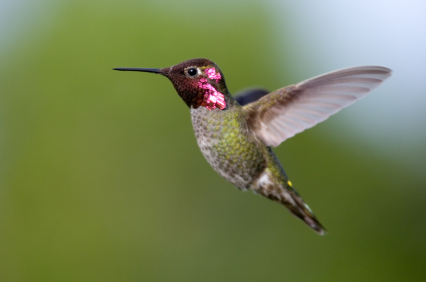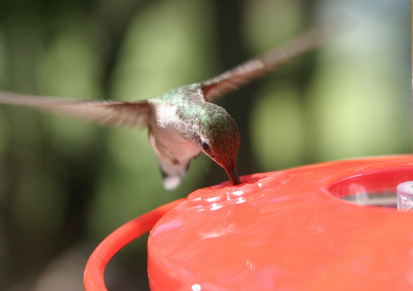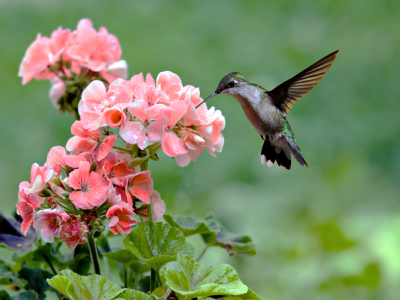
The photo above is of a male Anna’s Hummingbird. You can tell that it is a male in the photo because of the deep rose-red crown and gorget that extends to the sides of the neck.
This bird has increased its population and expanded its breeding range in recent years to Vancouver, British Colombia, and east to southern Arizona. This expansion is believed to be due to the introduction of exotic flowering plants, especially Eucalyptus, red-hot-poker and tree tobacco, and by the proliferation of hummingbird feeders.
This hummingbird has an unusually early breeding season. It is believed that the plant gooseberry and the hummingbird have evolved together, which may help explain why a favorite native food source of the Anna’s hummingbird is red gooseberry, an abundant plant that flowers early in spring. This species of hummingbird also consumes more insects than any other North American hummingbirds, catching small flying insects on the wing in the manner of a flycatcher, or by hover-gleaning among the leaves and twigs of trees. Or they find sustenance at the sap wells of sapsuckers or by pilfering insects from the webs of spiders. The Anna’s hummingbird eats more arthropods than most hummingbirds.
The breeding season begins in December and lasts until May or June. The males arrive first and begin defending territories associated with rich and dependable food sources. The females arrive a few weeks later and establish separate territories. The females then build lichen-camouflaged nests of made from plant down and spider webs. When the nest is partially built, the male performs his courtship display. First, he hovers before the female, then rises high, sometimes pausing to sing a thin, squeaky warble of a song before again diving toward her, tracing a deep arc and making a loud, explosive noise at the bottom of the dive. Incubation of the eggs takes about two weeks before the naked and blind nestlings hatch. After another three weeks, the young may leave the nest, although they remain dependent upon the mother for food for a few days. Juveniles rapidly develop territorial behavior, sometimes establishing their own feeding territories shortly after leaving the nests.
The Anna’s hummingbird is one of three species of hummingbird that are permanent residents of the U.S. or Canada. These are very small birds. The average weight of the male is 4.31 grams, while female weighs an average of 4.07 grams. The Anna’s is the largest hummingbird seen on the west coast. Of course, this is not saying much–it is only four inches tall.



